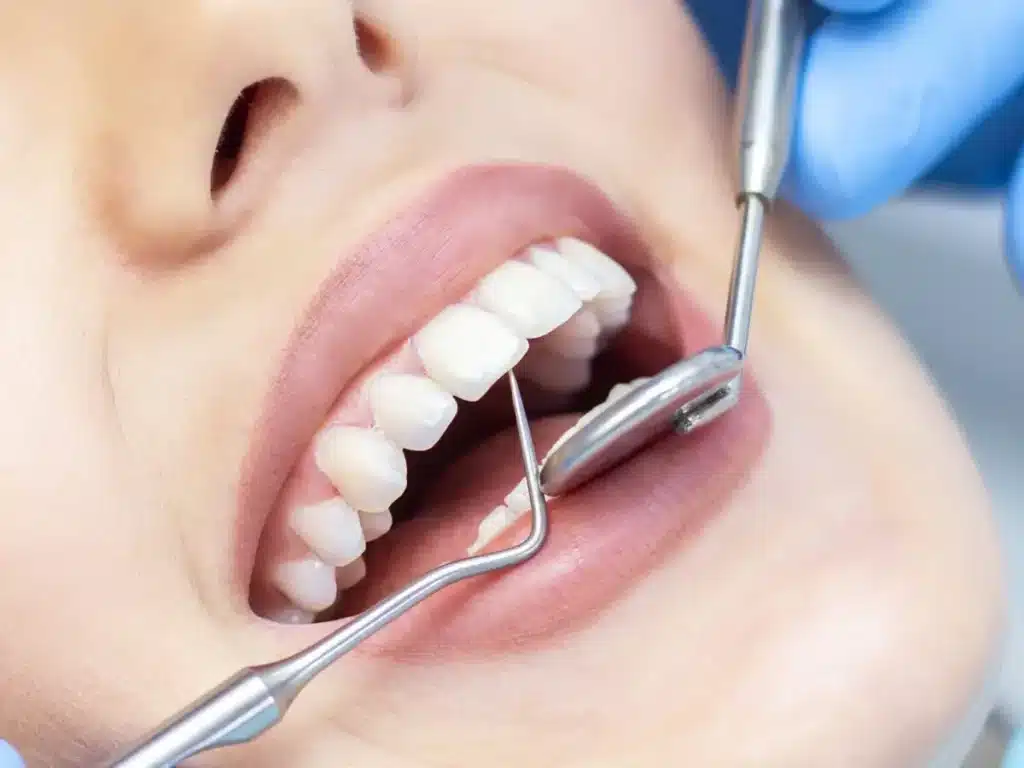Teeth Cleaning: The Foundation of Long-Term Oral and General Health

Introduction
Maintaining a radiant smile and healthy gums begins with one of the most basic, yet often overlooked, aspects of oral care: teeth cleaning. Far more than a cosmetic routine, teeth cleaning plays a pivotal role in preserving oral health, preventing disease, and supporting overall wellness. Both home-based hygiene practices and professional dental cleanings work hand-in-hand to form a robust defense against a range of health issues.
This comprehensive article explores every aspect of teeth cleaning—from daily habits to professional procedures. Whether you’re learning to optimize your oral care routine or considering your next dental appointment, this guide provides valuable insights to improve both your dental health and overall quality of life.
Why Is Teeth Cleaning So Important?
Oral Health Begins with Clean Teeth
Teeth cleaning removes food debris, bacteria, and plaque that accumulate on and between teeth. When neglected, these substances can lead to gum inflammation, cavities, bad breath, and even tooth loss.
Connecting Oral and Systemic Health
Studies consistently show that poor oral hygiene can contribute to systemic conditions such as:
- Heart disease
- Diabetes
- Stroke
- Respiratory infections
- Adverse pregnancy outcomes
Teeth cleaning is more than just a dental matter—it’s a foundational practice for whole-body health.
What Happens During a Professional Teeth Cleaning?
Step-by-Step Process
- Initial Examination
The dental hygienist uses a mirror to inspect your mouth for signs of decay, inflammation, or other concerns. - Scaling
Specialized tools are used to remove plaque and tartar from the gum line and between the teeth. This may involve manual scalers or ultrasonic instruments. - Polishing
A high-powered electric brush and gritty toothpaste polish the teeth to eliminate surface stains and smooth the enamel. - Flossing
Deep flossing removes any residual plaque and debris between teeth. - Rinsing
A rinse is administered to flush out the mouth and eliminate any remaining particles. - Fluoride Treatment (Optional)
This strengthens the enamel and provides extra protection against cavities.
Duration and Comfort
A standard dental cleaning typically takes 30 to 60 minutes and is relatively painless, although those with sensitive teeth or gums may experience slight discomfort.
Types of Dental Cleanings Explained
Prophylaxis Cleaning
- Goal: Preventive care
- Ideal For: Patients with good oral health
- Procedure: Scaling, polishing, and inspection
- Frequency: Every six months
Scaling and Root Planing (Deep Cleaning)
- Goal: Treat gum disease
- Ideal For: Patients with periodontal disease
- Procedure: Removal of bacteria from deep gum pockets
- Frequency: As recommended by a periodontist
Periodontal Maintenance
- Goal: Ongoing management of chronic gum disease
- Ideal For: Post-treatment maintenance patients
- Frequency: Every 3–4 months
Gross Debridement
- Goal: Remove large deposits of tartar
- Ideal For: Patients who haven’t had a cleaning in years
- Procedure: Initial clearing followed by a more thorough cleaning later
At-Home Teeth Cleaning Routine
Daily Brushing
- Use a fluoride toothpaste and a soft-bristled toothbrush.
- Brush at least twice daily, ideally after meals.
- Use small, circular motions and avoid brushing too hard.
Proper Flossing Technique
- Use 18 inches of floss, winding most of it around your fingers.
- Gently guide the floss between teeth and along the gum line.
- Floss at least once a day.
Mouthwash for Extra Protection
- Antibacterial mouthwashes kill germs and reduce plaque.
- Fluoride rinses help fortify tooth enamel.
Tools That Make a Difference
- Electric toothbrushes: More effective at removing plaque
- Water flossers: Ideal for those with braces or implants
- Tongue scrapers: Remove bacteria from the tongue’s surface
The Role of Diet in Dental Cleanliness
Foods That Promote Oral Health
- Crunchy vegetables and fruits: Clean teeth naturally (e.g., apples, carrots)
- Cheese and yogurt: Contain calcium and promote saliva production
- Green tea: Contains antioxidants and has antibacterial properties
Foods to Avoid
- Sugary snacks and drinks
- Sticky candies
- Carbonated beverages
- Excess citrus (in large amounts)
Water, fiber, and chewing sugar-free gum can help neutralize acids and clean the mouth between meals.
Signs You Need a Professional Cleaning
- Persistent bad breath
- Bleeding or inflamed gums
- Tooth discoloration
- Tartar buildup visible at the gum line
- Sensitivity to hot or cold
- Loose teeth
These symptoms indicate it’s time to see your dentist, even if your last visit was recent.
How Often Should You Get Your Teeth Cleaned?
General Recommendation
- Every 6 months for most adults and children
More Frequent Cleanings Needed For:
- Smokers
- Diabetics
- Individuals with braces or implants
- Patients with a history of periodontal disease
- Pregnant women
Following your dentist’s guidance ensures that cleanings are tailored to your individual oral health needs.
The Cosmetic Benefits of Clean Teeth
Whiter Teeth
Professional cleanings remove external stains caused by coffee, tea, red wine, and tobacco.
Fresher Breath
Eliminating bacteria from the mouth greatly reduces odor-causing compounds.
Confident Smile
Clean, polished teeth naturally improve self-esteem and help make a great first impression.
Pediatric Dental Cleanings
Early Dental Visits
Children should see a dentist as soon as their first tooth appears and no later than their first birthday.
Teaching Good Habits
Professional cleanings reinforce proper brushing and flossing techniques in kids.
Fluoride and Sealants
Many pediatric cleanings include fluoride treatments and sealants to protect against decay in vulnerable areas.
Teeth Cleaning for Adults Over 60
Common Challenges
- Gum recession
- Dry mouth
- Worn dental restorations
- Limited mobility affecting brushing
Special Care Recommendations
- Use prescription-strength fluoride
- Schedule more frequent cleanings
- Use electric toothbrushes and flossing aids
Misconceptions About Teeth Cleaning
Myth: It damages enamel.
Truth: Dental tools are designed to clean, not erode, enamel. Professional care is safe.
Myth: You only need a cleaning if your teeth hurt.
Truth: Pain is a late-stage symptom. Cleanings prevent pain by catching problems early.
Myth: Brushing hard removes more plaque.
Truth: Aggressive brushing can wear down enamel and irritate gums. Gentle, consistent care is best.
Innovations in Teeth Cleaning Technology
Ultrasonic Scalers
These use high-frequency vibrations to break apart tartar quickly and comfortably.
Laser Dentistry
Lasers offer minimally invasive cleaning for deep pockets and can reduce bleeding.
Intraoral Cameras
High-resolution images help patients and dentists monitor plaque, damage, and progress.
Teledentistry
Digital platforms now allow patients to consult with dentists about their oral hygiene habits and cleaning schedules remotely.
Cost of Professional Teeth Cleaning
Average Price Range
- Basic Cleaning: $75–$200
- Deep Cleaning: $150–$400 per quadrant
- Pediatric Cleaning: $60–$150
What Affects the Cost?
- Geographic location
- Dentist’s expertise
- Type of cleaning required
- Insurance coverage
Insurance and Discount Plans
Most dental insurance plans cover two cleanings per year. In the absence of insurance, many clinics offer discount memberships or payment plans.
Teeth Cleaning and Dental Anxiety
Common Fears
- Pain
- Sensitivity
- Judgment from dental staff
- Fear of the unknown
Coping Strategies
- Let your dental team know your concerns in advance.
- Ask about topical numbing gels or mild sedation options.
- Bring headphones and calming music.
- Schedule appointments at low-stress times of day.
Dental anxiety should never prevent you from getting care. Dentists are trained to work compassionately with nervous patients.
Final Thoughts
Teeth cleaning is a vital and manageable component of oral and general health. By combining daily home care with regular professional cleanings, you can dramatically reduce your risk of cavities, gum disease, and costly dental treatments down the line.
An investment in clean teeth is an investment in your smile, your confidence, and your health. Make dental hygiene a priority today, and your future self will thank you.
